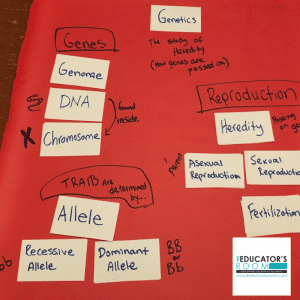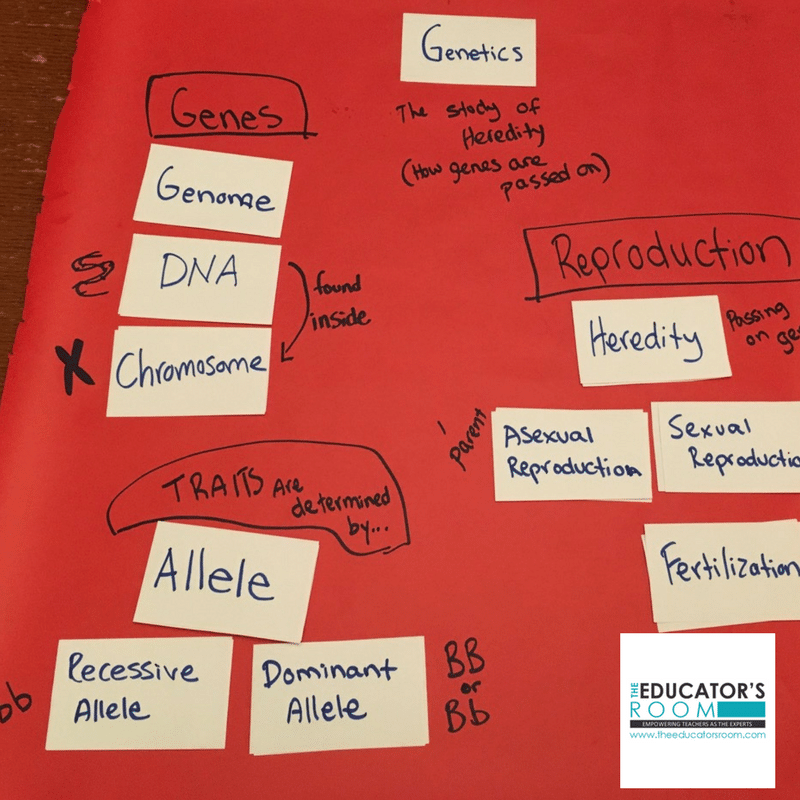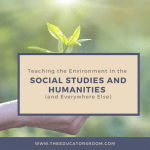If I were to ask my middle schoolers what the hardest subject is for them, I can tell you right now, a majority (especially sixth graders), would say science. Even though my kids typically love science labs, they despise all of the reading that accompanies them. When I talk to students about what makes reading about science so difficult, I get responses like, “It’s way too hard” and “I can’t even pronounce those words in the book” and my favorite, “I have no idea what I just read.”
‘During’ Reading Strategies- we’ve got this down!
In my experience as a reading specialist, I have had many opportunities to observe in different classrooms at the middle school level, and I have seen reading strategies being taught by amazing content area teachers. I’ve seen science teachers explicitly teach students how to monitor comprehension by stopping to summarize. I’ve seen social studies teachers use multiple graphic organizers to aid in comprehension of the text. I’ve even seen a math teacher teach students to use visualization techniques to help solve math problems. All of these strategies are great for students to use during their reading of the text, and they do work to help students better comprehend what they are reading. But sometimes I wonder, what if we switched the focus from teaching comprehension strategies from ‘during’ reading to more on some strategies to use ‘before’ reading?
[bctt tweet=”what if we switched the focus from teaching comprehension strategies from ‘during’ reading, to more on some strategies to use ‘before’ reading?” username=””]
Let’s focus on ‘Before’ Reading Strategies
When I taught 7th grade Science, I learned that incorporating pre-reading activities that focused on vocabulary could not only help students learn the new and obscure words, but it also built essential background knowledge needed to better understand the text. Let me be totally honest – some of the vocabulary words in the 6th-grade science textbook are difficult! Front loading vocabulary is an excellent pre-reading strategy that is proven to benefit all types of learners.
Front-Load Vocabulary with Concept Sorts
One strategy I used with consistent success was the use of word/concept sorts before reading. I learned about this strategy while I was in Graduate School from the book Words Their Way, (which is an excellent resource for all teachers), and I’ve loved it ever since. Word/concept sorts involve the teacher previewing the upcoming unit, and highlighting any keywords that students might not know, but are essential to understanding the big ideas. For example, say I was starting a unit on genetics. I might pick out the following terms for my students: genetics, genome, DNA, chromosome, recessive allele, dominant allele, heredity, Asexual reproduction, sexual reproduction, fertilization.
Next, I would have students write the terms on note cards. I would then take a class period to review what each word meant, relying heavily on visuals and examples. Remember, for most students, these words are brand new so the more analogies, metaphors, drawings – the better. I would have students record whatever they needed on the back of the notecards, so they could remember what each term meant. Then, working in groups of four (three works too, but no more than four), I would ask the students to sort their cards into different categories according to their meanings. Depending on my students’ abilities, I might create and label the categories -or- I may have them create their own categories.
Here is a sample word sort:

What’s great about this strategy is it gets students talking about the words and how they relate to each other. Once the groups have their words categorized, I would let my students do a “gallery walk” around the classroom so they can see how other groups organized their words. I’m telling you, this strategy is engaging, it makes students think critically, and it involves discussion and movement. My students always loved it, and when we were finished they had some background knowledge on the topic of Genetics so they were more confident and able to tackle that boring old science textbook.
References:
Bear, D., Invernizzi, M., Templeton, S., & Johnston, F. (2007). Words Their Way: Word Study for Phonics, Vocabulary, and Spelling Instruction (4th Edition). Prentice-Hall: New Jersey.






Hey Laura! Like minded fan of concept sorts here! I actually have a book about concept sorts for vocabulary instruction being published by Scholastic in January! Thanks for the article!